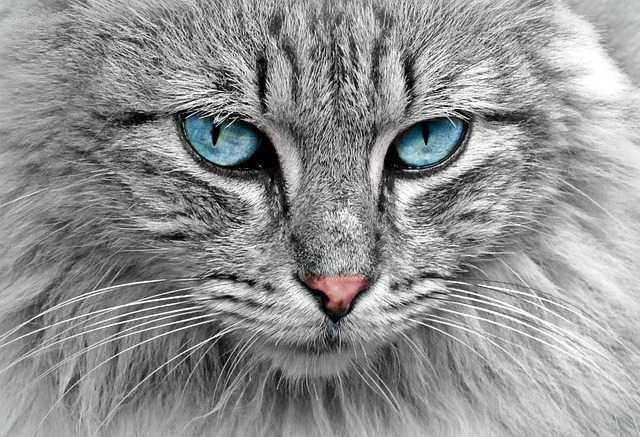Table of Contents
- Exploring the Rich History of Portrait Paintings
- Mastering Techniques for Capturing Emotion and Character
- Choosing the Right Medium for Your Portrait Artwork
- Tips for Commissioning a Personal Portrait from an Artist
- Q&A
- The Way Forward
Exploring the Rich History of Portrait Paintings
Throughout centuries, portrait painting has served as a powerful medium for capturing the essence of individuals, reflecting their personalities, status, and the cultural contexts of their time. From the regal portraits of royal families to intimate depictions of everyday people, this art form has evolved significantly. Portraits not only serve to immortalize individuals but also provide a glimpse into the artistic techniques and social values of various eras. Artists such as Leonardo da Vinci and Vincent van Gogh transformed the genre through innovative use of color, composition, and emotion.
The origins of portraiture can be traced back to ancient civilizations, where figures were often depicted in a symbolic manner. In ancient Egypt, for example, they created wall paintings that aimed to honor their gods and preserve the memory of the dead. Similarly, Greek and Roman societies produced busts and frescoes that emphasized realism and individual traits. As the Middle Ages progressed, portraits became more commonplace, with artists focusing on iconography and religious themes, eventually leading to a resurgence during the Renaissance.
- Renaissance Era: Characterized by a focus on realism and human emotion, with artists like Titian and Raphael.
- Baroque Period: Featured dramatic lighting and composition, as seen in the works of Rembrandt.
- 19th Century: Marked by the emergence of photography, which influenced painting techniques.
- Modern Art: Introduced expressionism and abstraction, diversifying the portrayal of human subjects.
Interestingly, the role of portrait painting has continually shifted. In earlier eras, portraits were often a privilege of the wealthy, commissioning artists to document their likeness for posterity. Yet, as accessibility to artistic expression grew, so did the democratization of portraiture. Examples of this shift can be seen in the works of artists like Frida Kahlo, who infused personal narrative into her self-portraits, demonstrating how this genre can serve as a powerful medium for personal expression and social commentary. Consequently, portrait paintings have modernized to encompass diverse styles, from realism to abstraction, reflecting the complexities and richness of human experience.


Mastering Techniques for Capturing Emotion and Character
To effectively convey the essence of emotion and character in portrait paintings, artists often turn to a variety of techniques that breathe life into their subjects. One of the most vital methods is understanding the anatomy of expression. This involves studying how facial muscles move during different emotional states. By mastering this anatomy, artists can recreate subtle nuances that resonate with viewers. Facial features such as the curvature of the lips or the positioning of eyebrows can dramatically alter the interpretation of a portrait.
Color choices play a significant role in expressing emotional depth. Warm colors like reds and oranges can evoke feelings of passion and warmth, while cooler hues such as blues and greens might suggest tranquility or sadness. Experimenting with color saturation can also affect mood; brighter colors can energize a piece, while muted tones may evoke nostalgia. Incorporating these principles allows artists to enhance the narrative embedded in their portraits, making them more relatable and impactful.
Lighting is another critical component to consider when striving to capture the essence of a subject. Utilizing chiaroscuro, the technique that emphasizes contrasts between light and dark, can help highlight specific features and emotions. By strategically placing light sources, artists create a three-dimensional effect that draws the viewer’s eye and enhances the overall mood of the painting. This method invites onlookers to feel the intensity of the portrayed character’s inner world.
Additionally, the composition of a portrait significantly influences how emotion is perceived. Elements such as the arrangement of the subject within the frame, the background context, and the use of negative space can tell a story beyond mere facial expression. Here are some important aspects to consider:
| Element | Purpose |
|---|---|
| Framing | Directs focus to the subject |
| Background | Sets tone and atmosphere |
| Negative Space | Creates balance and emphasizes forms |
By thoughtfully integrating these techniques, artists can transcend the surface of their portraits, inviting viewers to connect more intimately with the emotions and stories that lie within. Through practice and experimentation, the mastery of these techniques becomes not just a skill, but an essential pathway to creating art that resonates deeply with the audience.


Choosing the Right Medium for Your Portrait Artwork
When embarking on a journey into portrait artwork, selecting the right medium can significantly impact both your creative expression and the final outcome. Each medium offers distinct characteristics that can enhance your artistic vision. For instance, oil paints are celebrated for their rich colors and blendability, allowing for intricate details and a luminous quality that can bring life to a portrait. In contrast, acrylic paints dry quickly and can mimic an array of mediums, making them versatile for artists who appreciate speed and flexibility.
While traditional mediums like charcoal and graphite have stood the test of time for their ease of use and ability to provide fine detail, don’t underestimate the charm of pastels. The softness and vibrancy of pastels can create striking portraits with a unique texture, enabling you to play with light and shadow effortlessly. Similarly, watercolors can yield ethereal portraits, where the fluidity of the paint lends itself to dreamy effects that capture emotion and mood beautifully.
| Medium | Characteristics | Best For |
|---|---|---|
| Oil Paints | Rich colors, slow drying | Classic and detailed portraits |
| Acrylic Paints | Fast drying, versatile | Bold, contemporary looks |
| Charcoal | Soft lines, easy to blend | Detailed sketches and expressive lines |
| Pastels | Vibrant colors, soft texture | Textured, emotional pieces |
| Watercolors | Fluid, delicate washes | Light, airy representations |
Ultimately, the decision comes down to your personal preference and artistic goals. Experimenting with different mediums can also lead to surprising revelations about your style and technique. Consider how each medium resonates with your intended subject; for instance, you might find that oil paints suit a regal portrait, while watercolors work beautifully for a gentle, introspective depiction. Take the time to explore and reflect on how each medium can best capture the essence of your subject.


Tips for Commissioning a Personal Portrait from an Artist
When commissioning a personal portrait, it’s essential to begin with a clear vision of what you want. Consider the style that resonates with you – whether it’s classic realism, impressionism, or a modern abstract approach. Think about the emotion or message you wish to convey through the portrait. Additionally, prepare a few reference images that encapsulate the mood, colors, or styles you envision, as this will aid the artist in understanding your desires and expectations.
Next, engage in thorough research to find the right artist. Review their previous work to ensure their style aligns with your vision. Look for online portfolios, galleries, or social media profiles to see examples of their personal portraits. Pay attention to client testimonials as well; these can provide insight into the artist’s professionalism, communication skills, and ability to capture likenesses. Don’t hesitate to reach out to artists with questions—often, their enthusiasm and expertise will give you a sense of whether they are the right fit.
Once you’ve selected an artist, discuss logistics and details upfront. This includes the size of the painting, the medium (oil, acrylic, charcoal), and the estimated completion time. Transparency is key, so ask about pricing structures and potential additional costs. Here’s a simple table outlining common dimensions and their corresponding average prices:
| Size (inches) | Medium | Average Price ($) |
|---|---|---|
| 16 x 20 | Oil | 500 |
| 24 x 36 | Acrylic | 800 |
| 30 x 40 | Charcoal | 600 |
Lastly, foster a constructive dialogue throughout the artistic process. Schedule check-ins with your artist to discuss progress and give feedback. This collaboration not only keeps you informed but can inspire the artist, leading to a more personalized outcome. Express your thoughts of what you love as well as any adjustments needed, as this contributes to a successful commission and ensures that the final piece will be a cherished addition to your collection.
